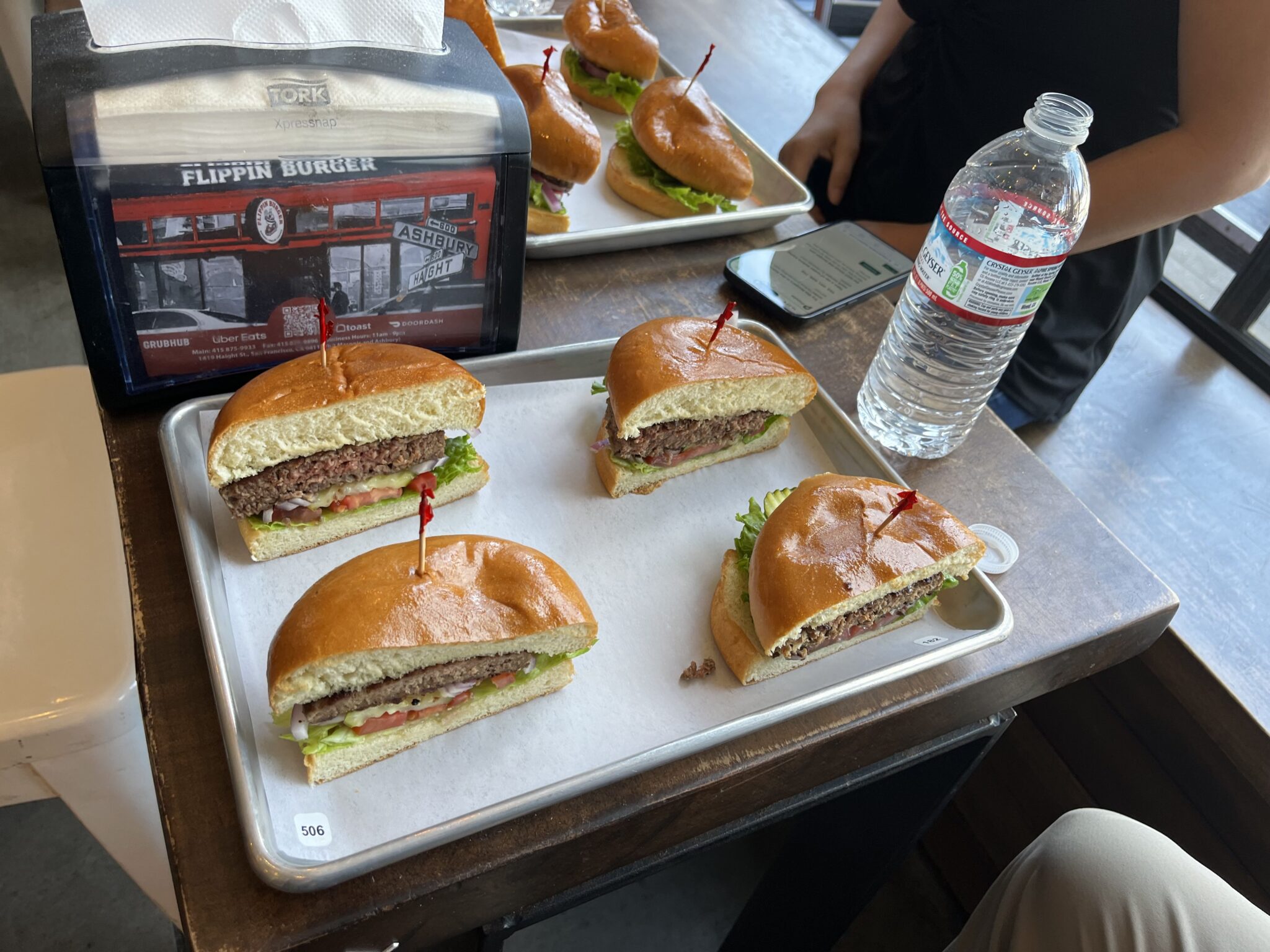News
GLP-1 Users Lose Weight, and Their Taste for Meat
Research•3 min read
Solutions
Foods that combine meat and plants might serve as a bridge for some consumers.


Words by Grace Hussain
Burgers made with a blend of beef and mushrooms. Chicken nuggets that include a quarter cup of veggies in each serving. So-called “balanced proteins” are foods made with a mixture of meat and plants that could help address the food systems’ meat emissions issue. These blended meats come from both readily recognizable brands like Purdue and their Chicken Plus nuggets, as well as newer startups such as 50/50 Foods’ Both Burger. The pitch is that blended meats can appeal to consumers looking to cut back on meat but not willing to give it up entirely.
Advocates of the products view them as a win-win-win: they’re more familiar for meat-eaters, emit fewer greenhouse gas emissions, spare more farm animals than traditional meat and get people eating more vegetables. For now, balanced proteins account for a “negligible” part of the meat market, Rachel Stoczko, a representative of Nectar told Sentient in an email. But in a marketplace that has been sluggish for plant-based alternatives, balanced protein products could be different enough to break through.
“We want to stealth health this for adults, as much as we want to do it for kids,” Stephen Theiss, co-founder of 50/50 Foods, purveyor of a burger made up of half-beef and half-vegetables, tells Sentient. For kids and adults, the bottom line is “it goes back to the flavor.”
The global food system is responsible for a third of all greenhouse gas emissions, and most of those food-related emissions are driven by beef. A wide body of research has found there is no way to avoid the worst impacts of global warming without dietary change, specifically in Global North countries like the United States — that consume more meat than the global average.
There is no silver bullet solution, says Miranda Gorman, who works on climate at Planet FWD, a company focused on calculating companies’ emissions. “There is not a single solution that would ever do enough to avoid climate catastrophe,” Gorman explains. Instead, climate research groups like Project Drawdown say a mix of responses is needed. As Gorman puts it, “the most we can do is to optimize a system of solutions and pull on as many threads as we possibly can.”
A landmark climate report published by the World Resources Institute in 2019 set out a number of solutions needed to curb food-related emissions, and alternatives to traditional meat were among them.
According to an analysis carried out by the company, burgers that are half-beef and half-plants would release 47 percent fewer greenhouse gases than an all-beef burger, according to modeling carried out by Planet FWD. The analysis doesn’t count emissions from animal manure, as it’s considered a coproduct of meat production.
Some researchers have recommended reducing beef consumption to no more than one beef burger and a half per week (again, in the Global North). Yet the U.S. hasn’t cut back on beef nearly enough to approach climate goals. The longer the delay, the steeper the consequences. Research published in Scientific Reports found that if we wait until as soon as 2026 to start meaningfully shifting away from meat and dairy, we’ll have to stop consuming animal products altogether by 2050 or we will shoot past climate goals.
Getting consumers to eat less meat is a steep challenge. “Eating food is an emotional experience for most people,” says Theiss. “Almost everyone has memory tied to it.” According to an analysis by Nectar, a project of Food Systems Innovation, products from four companies selling blended meat products are rated just as tasty or tastier than their fully-meat counterparts.
The company also tested plant-based alternatives and found that consumers consistently preferred both traditional meat and the blended products, saying that the plant-based alternatives weren’t as juicy. Some of the balanced proteins, on the other hand, excelled when it came to texture. “We find that adding vegetables to these products really often helps with the texture as well,” Caroline Cotto, director of Nectar, tells Sentient of the blended meats. “It maintains some more moisture.”

For proponents, blended meats are the kind of alternative that might appeal to a wider swath of omnivores. “We see balanced proteins as a bridge option, in a way, something that can help transition us to a more sustainable diet, similar to how hybrid cars have helped pave the way for vehicle electrification, we see that this may be a more palatable approach for consumers and for businesses alike,” Tim Dale, who works on balanced proteins for the nonprofit Food Systems Innovation, tells Sentient.
Eating blended meats instead of traditional meat strikes Gorman as a “really easy switch for a lot of people to make.” She hopes that if people are able to shift to these products now, they might eventually be open to bigger shifts towards even more plant-forward diets.
The better taste is a big win for consumers who may be unwilling to fully give up meat, but want to eat less of it — whether for climate, health or other reasons. “I think that’s what we’re advocating for here: let’s reduce the total amount of meat consumption, but use a little bit of meat to sort of add that flavor that omnivore consumers are really looking for,” says Cotto.
Adding plants to meat is not an entirely new idea. Cotto points to dishes like mapo tofu, which consists of a very small amount of meat that’s used for flavor instead of acting as the center of the meal. Another example: meatloaf, which mixes meat with breadcrumbs.
Just a few years ago, plant-based alternatives like Beyond and Impossible were flying off the shelves and a significant shift away from meat seemed at least plausible. But since then, the popularity of those products with consumers and investors has waned. Beyond, one of the seminal plant-based meats brands, was reported to be in a “precarious” financial position, boosted by “a $100 million financing package from Unprocessed Foods, a unit of the nonprofit Ahimsa Foundation” earlier this year.

Part of the reason Dale thinks that consumers stopped buying as many plant-based alternatives is because competitors were able to point to long ingredient lists and seed doubt about the products’ health claims. Consumers tend to reach for products with shorter, more familiar ingredient list, Dale says.
Investors have been “burned” by sluggish sales in the plant-based sector, says Theiss, which has caused a damper in investment. Another challenge for securing funding is “a tech bias in the investment community,” Theiss says. Investors like solutions that are heavily engineered, he says. “That’s great for a car. It’s not so great for food. Maybe the simple innovation is the better idea.”
Theiss says the company opted for recognizable-sounding plant ingredients to supplement the beef contents of their burger. And they kept the ingredient list short too. The approach has helped them garner a few key retailers. At the end of 2024, they launched their burger in Disneyland, California, and they’re now available at online retailer Thrive Markets.
Editor’s Note: FSI is a donor to Sentient. The funding was restricted to work unrelated to this coverage. More broadly, Sentient maintains complete editorial independence from its funders as laid out in our policies here.